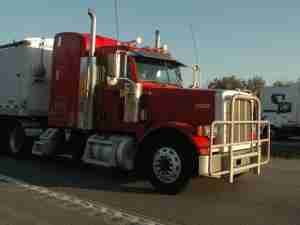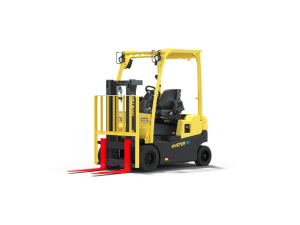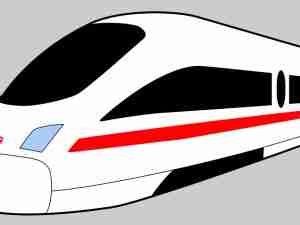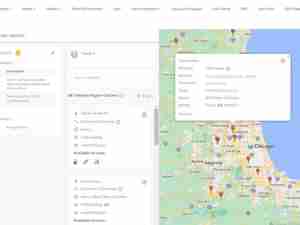According to a market intelligence report, the global on-demand transportation market is expected to expand at a CAGR of about 14% during the forecast period.
The transportation industry is undergoing significant transformation and people are adopting online booking applications in order to book a mode or means of transportation. Rising traffic congestion and high fuel cost are key factors driving the adoption of on-demand transportation services. Adoption of smartphone-based internet services is rising among consumers, primarily due to the increased usage of smartphones, ease of operating the app, faster internet connectivity, and presence of globally leading and local service providers coupled with lower charges of services. High cost of vehicle ownership is encouraging people to prefer on-demand transportation services owing to their cost effectiveness and availability as per the requirement. Furthermore, on-demand transportation is an effective solution for the rising traffic congestion, as higher vehicle ownership is likely to boost the number of vehicles on road. Less number of vehicles per 100 people, increase in number of daily commuters heading to workplaces and homes, increased burden on public transportation facilities due to rapid urbanization, and lack of proper connectivity of public transportation systems are fueling the demand for on-demand transportation services. On the other hand, public transportation facilities across the globe are failing to cater to the demand, due to increasing urbanization and rising population. Increase in number of working class people, rise in income opportunities, increase in per capita income coupled with increased tendency to travel for work and holidays are fueling the demand for on-demand transportation services across the globe.
Countries from Europe and North America are well-developed and witness extensive adoption of advanced technologies and smartphones. Availability of faster internet connectivity and presence of globally leading service providers coupled with higher rate of adoption from consumers led the organized sector to hold a major share of the market in North America and Europe. However, in other regions, the unorganized segment accounts for major share of the market, in terms of revenue. Vehicles utilized in the unorganized sector are generally privately owned. These are considered as private services; as unorganized services cannot be availed through internet or smartphone-based apps.
In terms of type, ride sourcing is an emerging trend across the globe, in which consumers can book a ride via a smartphone-based app. Ease of operating the app, increased penetration of smartphone users, and availability of reliable internet services are fueling the demand for ride sourcing services. Ride sourcing services are flexible and hence, a large number of consumers traveling to workplaces, homes, to restaurants, and colleges prefer ride sourcing services. Thus, the demand for ride sourcing services is increasing owing to an increase in the working class population. Low rate of motorization, lack of adequate public transportation facility, crowded public transportation, and increase in fuel prices coupled with elimination of driving are fueling the ride sourcing segment of the global on-demand transportation market. The ride sourcing segment of the market is anticipated to expand at a CAGR of about 20% during the forecast period.
Based on business model, the P2P segment is a well-established segment and is expanding at a significant rate owing to the cost-effectiveness of the journey. Moreover, the expansion of the P2P segment can be a solution to reduce emission from vehicles, owing to sharing of the vehicle by multiple travelers on the same route. Furthermore, software solution providers or platform providing companies are increasing their own fleet size in order to boost revenue, which in turn is driving the B2C segment.
Entry level passenger cars are widely adopted for passenger transportation services. Maneuverability, requirement of smaller space, exemption from several taxes, higher fuel efficiency, and lower cost of entry level passenger cars make them suitable for passenger transportation services. Demand for SUVs is rising among consumers, which is attributed to consumer preference for longer journeys, larger space in the vehicle, and high comfort factor. Large number of passenger cars utilized for passenger transportation services are owned by individuals who are willing to share their vehicles. Such services are considered as peer to peer services. Large share of passenger cars has led the P2P segment to hold a major of the global on-demand transportation market. Legality of peer to peer services, increased per capita income of individuals coupled with willingness to share their vehicle, exemption from road taxes in several nations for passenger cars, and increasing demand for ride-sharing sourcing services rather than rental vehicles are fueling the passenger cars segment and subsequently, the P2P segment of the market.
Autonomous technologies have proven to be highly effective in reducing the number of accidents occurring due to driver errors. Consequently, regulatory bodies across several nations are mandating several ADAS (advance driver assistance system) technologies into vehicles. ADAS technologies, such as lane keep assists, brake assist technology, and adaptive cruise control, drive the vehicle automatically; consequently, consumers are preferring such semi-autonomous vehicles owing to rising concern for safety among society. Consumer demand for increased in-vehicle safety, incorporation of ADAS technologies at manufacturers end, and regulations implemented by governing bodies are fueling the demand for semi-autonomous vehicles across the globe. Market for electric vehicles, also considered as zero- or low-emission vehicles, is rising across the globe primarily due to the considerably lower operating cost as compared to that of conventional vehicles, heavy discounts and incentives offered by governing bodies, announcements to implement a ban over the use of fuel powered vehicles, and availability of electric vehicle manufacturers. The paradigm shifts of governments toward building electric vehicle charging infrastructure is fueling the demand for electric vehicles. Therefore, electric vehicle segments, such as hybrid electric vehicle (HEV), plug-in hybrid electric vehicle (PHEV), and battery electric vehicle (BEV), are anticipated to expand at a significant growth rate during the forecast period. The rate of adoption of battery electric vehicles is increasing significantly among consumers, which is primarily due to the decline in prices of vehicles, increase in range of batteries, and heavy subsidies and incentives from governing bodies coupled with expanding charging infrastructure.
Demand for on-demand transportation services is rising considerably across countries that have lower number of vehicles per capita and lack of proper public transportation facilities. China and India are countries with large population and low motorization rate, thus people are moving toward alternative modes of transportation. Rising urbanization is fueling the demand for the on-demand transportation services in developing countries, owing to rising awareness among passengers, better internet connectivity, and increasing smartphone usage. Increased road traffic congestion, implementation of stringent emission norms from governing bodies in order to curb pollution level, and rise in working class population heading to workplaces and homes are fueling the demand for on-demand transportation services across the globe.
Key players operating in the global on-demand transportation market include Uber Technologies Inc., Lyft, Inc., ANI Technologies Pvt. Ltd. (OLA), Grab, BlaBlaCar, Wingz, Inc, Careem, Taxify OÜ, Gett, Beijing Xiaoju Technology Co, Ltd. (Didi Chuxing), Curb Mobility, Cabify, Europcar, The Hertz Corporation, Avis Budget Group, Inc., and Enterprise Holdings, Inc.








